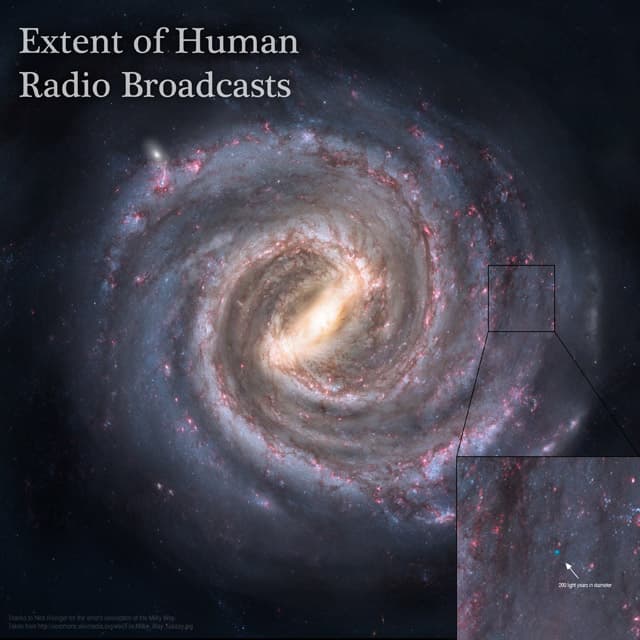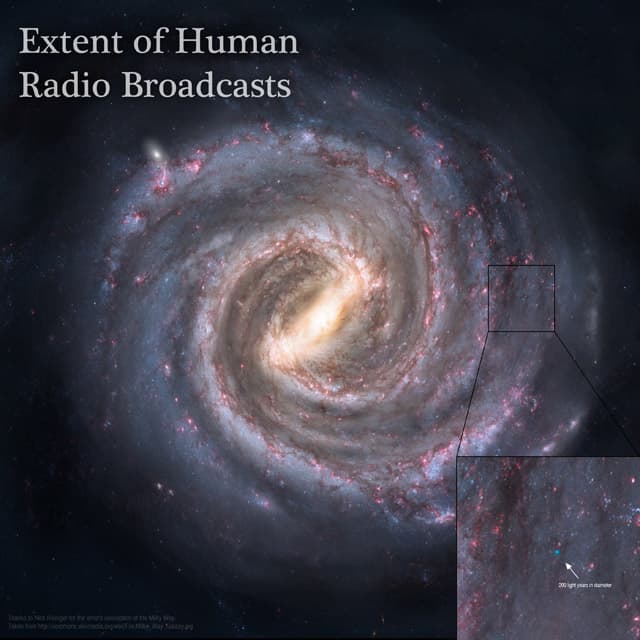Assuming that there are other intelligent civilisations out there in the universe, what is the likelihood that we’ll ever be able to communicate?
The key to answer this question is to look at the Drake Equation.
Where N is the number of civilisations in our galaxy with which radio-communication might be possible (i.e. planets past our light cone); The DE tells you the necessary informations we need to estimate an answer for. The probability we communicate with another civilisation depends on the number of stars in our galaxy (represented by the average star-formation rate R*), the fraction of stars with planets (fp), the average number of planets in the Goldilock zone (ne), the fraction of planets that develop life (fl), the fraction of planets with life that develop an intelligent life form(fi), the fraction of them with ability to communicate using technology (fc) and finally the length of time this civilisation release signal into space (L).

These components are not trivial. Until few years ago we thought exoplanets were rare and now we think that half the stars in our galaxies have them. Also, the last one is important. We send less signal into space now than when we first started telecommunication. A signal lost in space is a waste of energy and money, so we have become better at bouncing our signals off the atmosphere.
The Drake equation shouldn’t be interpreted literally. The uncertainty on these parameters are quite big and the subtle ways these parameters relate to each other are not taken into account. Many people use Drake Equations as a philosophical jumping point rather than a predictive tool.

